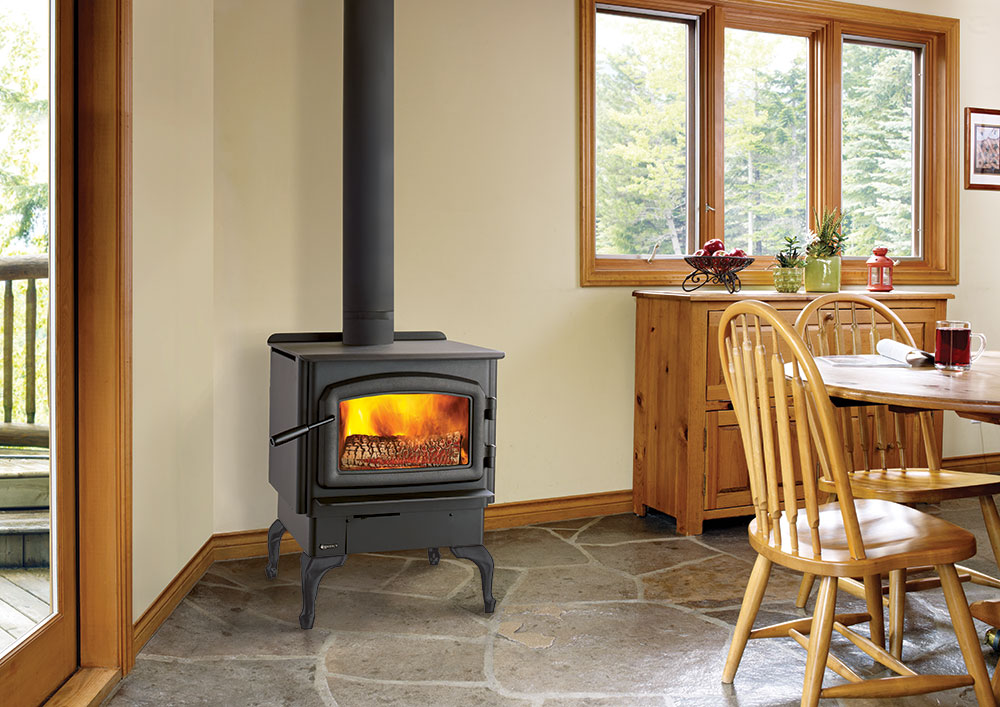
Proper Wood Burning in a Wood Stove
When it comes to proper wood burning in a wood stove, the choice of materials plays a critical role in ensuring safety, efficiency, and the longevity of the stove. It’s essential to avoid burning materials that are not suitable for wood stoves, such as cardboard, magazines, wrapping paper, dryer lint, and fire accelerants. Additionally, burning wet or unseasoned wood is not recommended, as it can lead to negative effects such as an increased risk of chimney fires and decreased heating efficiency.
Furthermore, the use of dry, seasoned firewood in a wood stove offers numerous advantages. Dry, seasoned firewood produces reduced smoke, contributes to longer-lasting fires, and minimizes the buildup of creosote in the chimney. It’s important to note that not all types of firewood are created equal. Seasoned hardwoods such as maple, oak, and ash are recommended for optimal performance in wood stoves, while it’s crucial to be cautious of the drawbacks associated with softwoods like pine and cedar.
For instance, burning softwoods may lead to quicker burn times and less heat output compared to burning seasoned hardwoods. Therefore, understanding and selecting the right type of firewood for a wood stove can significantly impact its overall performance and longevity. By choosing the appropriate materials for burning in a wood stove, individuals can ensure a safer and more efficient heating experience while minimizing potential risks associated with improper wood burning practices.
Don’t forget to visit Dr. Sweep Chimney and Masonry Services, Inc. for professional chimney and masonry services, ensuring the safety and longevity of your chimney system.
Identifying Well-Seasoned Firewood
When it comes to identifying well-seasoned firewood, there are several key indicators to look for. First and foremost, properly seasoned firewood will display dry cracking on the ends, which is a clear sign of low moisture content and optimal readiness for burning. Additionally, seasoned firewood should not emit a pungent smell, indicating that the wood has dried out effectively.
The moisture content of firewood is a critical factor in determining its burning efficiency. Wood with a moisture content above 25% will burn less efficiently and produce more smoke while generating less heat, leading to a suboptimal burning experience. To accurately gauge the readiness of firewood for burning, individuals can utilize a moisture meter to test the moisture content, ensuring that they are using well-seasoned firewood for their wood stove.
Lastly, it is highly recommended to plan ahead and order firewood in advance, especially in the early spring, to allow sufficient time for proper seasoning. By doing so, individuals can guarantee the availability of well-seasoned firewood when they need it, promoting a safer and more efficient wood-burning experience. For those seeking the highest quality firewood, it’s essential to pay attention to these signs of well-seasoned wood and take proactive measures to ensure a reliable supply of suitable firewood throughout the year.
Risks and Dangers of Burning Incorrect Materials
The potential dangers associated with burning incorrect materials in a wood stove are significant and can have far-reaching consequences. For instance, using treated, coated, or wet wood in a wood stove can lead to an increase in the release of toxic chemicals, posing health risks to those exposed to the emissions. Furthermore, burning such materials can result in chimney damage, potentially leading to costly repairs and compromising the safety of the entire chimney system.
Another critical risk of burning incorrect types of wood is the detrimental impact on heating efficiency and the increased likelihood of chimney fires. When softwoods, such as pine and cedar, are used instead of recommended seasoned hardwoods like maple, oak, and ash, the heating efficiency of the wood stove can be compromised. This not only affects the warmth and comfort provided by the stove but also raises safety concerns related to the potential buildup of creosote, a highly flammable substance commonly found in chimney deposits.
Moreover, burning materials like cardboard, magazines, and wrapping paper can have severe consequences. These items can release harmful chemicals when burned, posing health hazards to individuals in the vicinity. Additionally, the combustion of such materials can lead to excessive creosote buildup in the chimney, increasing the risk of chimney fires and compromising the overall safety of the wood stove and chimney system. Therefore, it is crucial to adhere to the recommended guidelines for burning materials in a wood stove to ensure the safety and longevity of the entire system.
For professional chimney and masonry services, including chimney sweep, repair, and maintenance, readers are encouraged to explore Dr. Sweep Chimney and Masonry Services, Inc. at Dr. Sweep Chimney and Masonry Services, Inc. for expert assistance in maintaining the safety and efficiency of their wood stove and chimney system.
Best Practices for Starting and Maintaining a Fire
When it comes to starting and maintaining a fire in a wood stove, there are several best practices that can enhance the overall experience and safety. Using the driest and densest wood is essential, as it ensures a longer-lasting and more efficient fire. Seasoned hardwoods like oak, maple, and ash are recommended for their high energy content and reduced moisture, leading to minimal smoke and creosote buildup.
Properly arranging firewood is another crucial aspect of starting and maintaining a fire. For inside fires, arranging the firewood in an upside-down log cabin formation can help create a more controlled and longer-lasting fire. Additionally, monitoring the heat, air, and fuel balance is important for achieving a successful fire, as it contributes to efficient fuel consumption and optimal heat output.
In terms of maintenance, regular chimney and flue upkeep is vital for better fires and overall safety. This includes annual chimney cleaning to remove creosote buildup and any potential blockages that could lead to chimney fires. Warming the flue before starting a fire is also recommended, as it helps to establish proper draft and airflow, resulting in a more effective and safer burn. By following these best practices, individuals can ensure that their wood stove functions efficiently and safely, providing warmth and comfort while minimizing potential risks.
For more detailed guidance on maintaining a safe and efficient wood stove, individuals can explore professional chimney and masonry services offered by Dr. Sweep Chimney and Masonry Services, Inc. Their expertise in chimney sweep, repair, and maintenance can further contribute to the longevity and optimal performance of wood stoves and chimney systems. Visit Dr. Sweep Chimney and Masonry Services, Inc. for more information.
Improving Wood-Burning Stove Performance
When it comes to improving the performance of a wood-burning stove, several factors play a crucial role in achieving optimal heating efficiency and ensuring safety. One of the key factors is the quality of the wood used for burning. Dry, well-seasoned hardwoods such as maple, oak, and ash are highly recommended for use in wood stoves due to their high density and lower moisture content, which result in longer-lasting fires and reduced smoke emission. On the other hand, softwoods like pine and cedar are less dense and contain higher moisture levels, making them less efficient for generating heat and maintaining a consistent fire.
In addition to the type of wood used, burning practices also significantly impact a wood stove’s performance. Properly arranging firewood in a log cabin formation for inside fires, monitoring the balance of heat, air, and fuel, and ensuring the chimney and flue are well-maintained are all essential practices for achieving successful and long-lasting fires in a wood stove. Users have reported significant improvements in their wood stove’s performance after adjusting their burning practices, emphasizing the importance of following recommended techniques for starting and maintaining fires in a wood-burning stove.
Ensuring Safety and Longevity of Wood Stove and Chimney System
Taking the necessary steps to ensure the safety and longevity of a wood stove and chimney system is crucial for maintaining a secure and efficient heating source in your home. Professional chimney and masonry services, such as chimney sweep, repair, and maintenance, are essential for upholding the integrity of the wood stove and chimney system.
By enlisting the expertise of professionals, homeowners can benefit from thorough chimney inspections, cleaning, and repairs which are vital for preventing potential hazards such as chimney fires and carbon monoxide leaks. These services also contribute to the longevity of the chimney system, ensuring that it functions optimally for years to come. For instance, regular chimney cleaning can remove creosote buildup, a highly flammable substance that poses a significant fire hazard if left unaddressed. Additionally, professional masonry repairs and maintenance can help preserve the structural integrity of the chimney, preventing issues such as water damage and deterioration that could compromise its safety and longevity.
Reliable Wood Stove Installation & Maintanance Company in Ann Arbor, MI
As the experts at Dr. Sweep, we prioritize your safety and the longevity of your wood stove. Understanding what not to burn is crucial. Trust us for professional wood stove installation and maintenance in Ann Arbor, MI. Don’t risk damage or safety hazards—contact us to ensure your wood stove operates efficiently and safely for years to come. Reach out today for expert guidance and reliable service!
Dr Sweep
24800 Warner Ave Suite 103, Warren, MI 48091
(248) 639-4897



